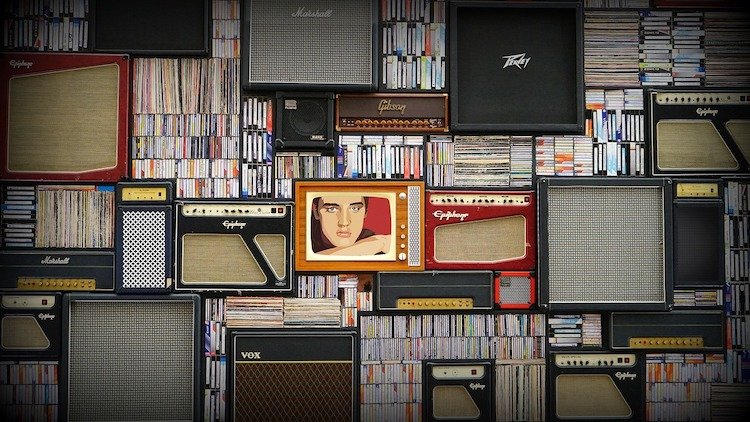
(Photo Credit: Rawpixel.com on Freepik)
As the march towards more realistic entertainment environments continues, the music industry is potentially diving headfirst into 3D audio. IRCAM Amplify is one player attempting to eradicate the barriers to adoption.
Spatial audio’s immersive and dimensional aspect — and its appeal to the larger music audience — isn’t exactly a novel concept for industry mega-players like Apple Music, Sony, or Microsoft. But is there a tipping point ahead into 3D audio ubiquity?
According to a study published in Fortune Business Insights, the global 3D audio market was worth $3.8 billion in 2019. The study’s prediction that it could grow to a whopping $12.97 billion by the end of 2026 now seems highly convincing. 2021 saw major streaming giants Apple Music and Amazon Music stepping into the 3D audio realm.
In January, Apple’s VP of Services Eddie Cue reported that Apple Music listeners more than tripled the platform launched a spatial audio feature, and monthly plays grew by over 1,000%. Apple Music also partnered with Mercedes-Benz to bring the treasure trove of spatial audio to drivers around the world. Now celebrating its success, the streaming giant is calling spatial audio ‘the future of the music industry.’
But for a majority of music industry players, the re-creation of stereo recordings and synthesized sound (both new and old releases) into a multi-dimensional 3D listening experience has been daunting. Labels, producers, and distributors currently wrestle with significant obstacles to 3D audio conversion.
There are different takes on how much work the transition to spatial audio requires. But for many, the conversion of tracks is incredibly expensive, takes too much time, and is highly technically demanding. Naturally, large-scale implementation isn’t everyone’s cup of tea.
Already, a number of players are emerging to solve these problems for content owners and creators. One company, IRCAM Amplify, is enabling wider access to intricate 3D audio technology. By reducing entry barriers, the company says it will expedite the transition of music into an immersive 3D audio experience.
IRCAM Amplify, a subsidiary of France’s premier audio research institute IRCAM, says it is ‘situated at the forefront of audio innovation,’ and is ‘dedicated to democratizing 3D audio technology.’ The company recently joined forces with DMN to further expand its industry-changing technology.
Frédéric Amadu, CTO of IRCAM Amplify, told DMN that artists and distributors can now effortlessly process songs into 3D audio. “The transition requires minimal technical knowledge and a manageable budget,” he added.
Amadu says IRCAM Amplify’s mission is to make their 3D audio conversion engines accessible to the gamut of industry players — including mega labels, indie artists, distributors, and ‘even bedroom producers.’
Speaking about the existing constraints around large-scale audio spatialization, Amadu said the current pathway to 3D transition requires specialized studios with specific tech equipment. “While these studios are adept at processing individual tracks, challenges arise with mass spatialization.”
Amadu explains that this ‘one-track-at-a-time’ conversion process is highly unfeasible for catalog owners, because it requires a significant investment of time and money. “That’s where IRCAM Amplify steps in. We provide a scalable solution for mass-spatialization of catalog tracks, quickly and cost-effectively.”
With the ability to convert large numbers of catalog tracks into spatial audio at a reasonable price, the company is promoting large-scale adoption of the technology.
The timing might be perfect. Catalog tracks well-recorded for their time — and worth millions and millions of dollars — are now on the verge of quickly sounding ‘outdated.’
For a publisher that owns multiple artist catalogs, conversion of hundreds of tracks into 3D could be a laborious, back-breaking project. Nonetheless, this transition is becoming imperative. If publishers want to continue to monetize their catalogs, they need to find a way to transition their libraries into 3D audio — without an exorbitant price tag.
According to IRCAM, this move to spatial audio will not only ‘revolutionize the listener experience,’ but also ‘broaden the reach of catalog tracks’ that are currently gathering dust without an audience: “As the demand for 3D audio grows, the transition to spatial audio will also increase IP value.”
Amadu says these old catalog recordings, originally produced without any spatial formats in mind, could be ‘reinvigorated and revitalized to gain a new lease on life.’
“Many artists, companies, and distributors are ready to shift to 3D audio. However, they give up because the learning curve is too high and they think it’s too complex. With IRCAM Amplify, any distributor can create 3D audio versions of their tracks in seconds.”

Old recordings, created without any spatial formats in mind, could be ‘reinvigorated and revitalized,’ (Photo Credit: Mikes-Photography)
Amadu emphasizes that IRCAM Amplify aims to democratize 3D to ensure the transition is no longer prohibitive to anyone in the business.
While discussing the challenges artists, labels, and publishers face with audio spatialization, Amadu questioned whether it’s even practical or sustainable for anyone to be spending thousands of dollars on 3D conversion. “Even the most affluent labels might balk at such an expenditure. It’s simply not a feasible approach. So we’re providing a cost-effective solution as an add-on service, offered directly by distributors and labels. This will make large-scale spatialization easily accessible and financially viable.”
Amadu explains how IRCAM Amplify’s AI-powered engine is trained to understand and dissect the DNA of any song — old or new. “Running an automated algorithm that analyzes the track, understanding what it’s made of, what the mastering is like — that knowledge and understanding paves the path for spatial transformation that offers pure excellence.”
IRCAM Amplify launched their AI-powered spatial audio engine beta in May.
Indie artists’ music distributor Believe, and its subsidiary Tunecore, have already joined forces with IRCAM Amplify. The spatial audio beta offers a user-friendly interface that fine-tunes the spatialization process.
IRCAM Amplify’s beta also brings comprehensive support for multiple formats, and easy online access via a simple API. Artists can customize their spatialization approach by adding effects to audio, and incorporate special treatments to the new versions of their tracks. If required, the company’s conversion engine can also accentuate specific instruments or facets of a song. This will create a highly immersive and enhanced 3D experience for the audience. The company believes that this level of detail in customization validates artists’ aesthetic preferences, so the final output aligns with their vision.
With 3D audio gaining listeners and catalog conversions, it will be interesting to see where the format goes next. Amadu believes their AI engine will ‘empower players of the digital music industry.’
As streaming services quickly make the switch to immersive audio experiences, listeners could soon expect 3D audio as a necessity.
And that’s just the beginning. The possibility of wider industry applications include larger scale implementation of potentially realistic simulations of live concerts. As phone manufacturers and other fidelity products make hardware updates that support 3D sound, the future of this immersive experience appears limitless.
This spotlight on spatial audio formats is also drawing attention to another benefit — mental wellbeing. According to a Japanese study, 3D audio’s high-res sound alongside inaudible high-frequency components induce relaxation and boost attention even without conscious awareness. Does that mean we’ll soon find spatialized podcasts, audiobooks, and other similar formats?
From the outset, it does appear like 3D audio could quickly encompass every piece of audio. But it’s important to remember that every few years, new ‘promising’ high-res formats emerge — claiming they’ll change the music world.
So maybe we soon inhabit a world where every recorded piece of audio features sonic immersion. Or, something new and even better will surface to take 3D’s place.
For now, spatialization is improving sound quality and we’re here for it. A sensory 3D space, with sounds emerging from all around us, is edging us closer to audio reality.
Artists, distributors, labels, producers, and digital music companies can streamline entry into immersive 3D formats by participating in IRCAM Amplify Beta here.

